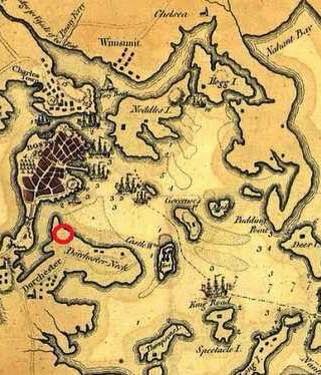Despite the evacuation of British troops from the town of Boston on the 17th of March 1776, the town would not be immediately free from military control. Though the British had boarded their ships and sailed into the harbor, they lingered in sight of the town for several days. Washington was anxious to rush to New York where the British might strike next, but with the British ships still in the outer harbor, he could hardly leave the town unprotected.
On March 20th, General Washington left General Nathanael Greene in charge of a force of troops left behind to protect Boston from re-invasion. Greene immediately put Boston back into a state of martial law, only this time under the authority of the Continental Army. Under Greene’s command, Greene ordered his soldiers to make a good show of themselves, condemning plundering and abuse of Boston residents and promising punishment for any soldier or officer caught doing so. He expected his soldiers to maintain an appearance of a clean uniform, face, and hands, and ordered his men to keep their weapons in good condition. Greene felt that it was necessary that his soldiers be on double duty while the town’s defenses were low, ordering nightly patrols until the British left the harbor.
As the days wore on, it became unclear why the British were still lingering in the harbor. The original assumption had been that they were preparing to sail, but when days of good weather came and went with no movement of the British fleet, General Greene and General Washington grew anxious that they might be preparing for a surprise attack. Greene warned his men of the possibility and ordered some of his troops to man boats in the harbor to watch for any indication of the enemy’s next move, prepared to fortify the town, and advised his troops to be ready for an alarm at a moment’s notice.
General Greene’s command in Boston lasted two weeks, which was just long enough to see the British fleet eventually sail from the harbor. It is interesting to note the success of Greene’s command in Boston. He states in one of his letters that during his entire stay in Boston there were only one or two complaints from the inhabitants regarding plundering, and those complaints could not even be proven. In addition, when Greene left, he was replaced by Artemis Ward who the inhabitants complained got nothing done to help strengthen the defense of the town. A letter written by William Cooper to John Adams, explained that there was nothing being done under Ward’s care and explicitly asks for the command of Boston to be placed back in the care of General Greene or another equally capable officer. It had become clear that General Greene had impressed the people of Boston with his command.




